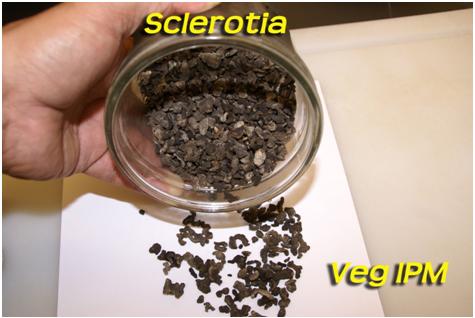 |
|
|
|

|
|||
| |
|||
The 2011-2012 lettuce production season is coming to a close in the desert southwest region of Arizona. Transitioning to warm weather crops, the presence of Sclerotinia drop in former lettuce fields may quickly fade from the memories of growers and Pest Control Advisors. Although the crop and the disease are now gone, the fungal pathogens Sclerotinia minor and Sclerotinia sclerotiorum are still present in these fields in the form of the overseasoning structures called sclerotia. These small fungal bodies, which were produced in large numbers on infected lettuce plants, were incorporated into the soil along with the remains of diseased lettuce plants and will allow both pathogens to carry over in soil to await the planting of the next crop of lettuce or other susceptible crop. How long sclerotia survive in soil depends on several factors: however, high soil moisture and temperature are known to greatly hasten their destruction. Increasing soil temperatures due to solar radiation, which peaks during July and August, combined with high soil moisture supplied by irrigation of warm-season crops will help reduce the number of viable sclerotia in portions of the field, especially in furrows, where soil moisture is high. Flooding of infested field soil for at least 4 weeks during the hottest months of July and August in the Yuma area has been shown to destroy virtually all sclerotia of both fungal pathogens.
To contact Mike Matheron go to: matheron@ag.arizona.edu.
|
|||
| Back | |||
For questions or comments on any of the topics please contact Marco Pena at the Yuma Agricultural Center. |
|||
| Home | Cotton
| Veggies | Forages
| Grains | Citrus
| Crop x Crop Insects | Diseases| Weeds | Pesticides | Economics | News | Weather | Research | Photos | Contacts | General Info. Copyright © 2001 University of Arizona, College of Agriculture and Life Sciences Webmaster: Al Fournier (acis@ag.arizona.edu) |
|||
